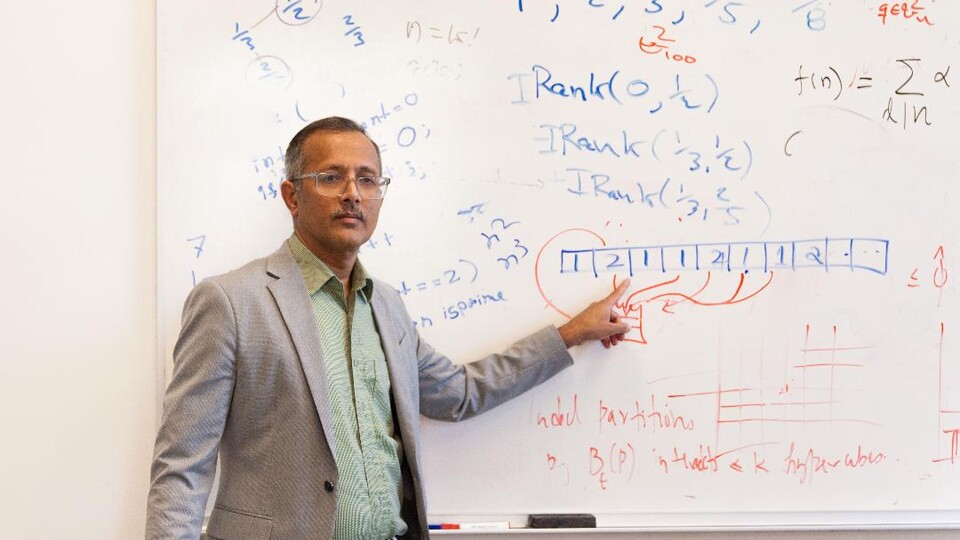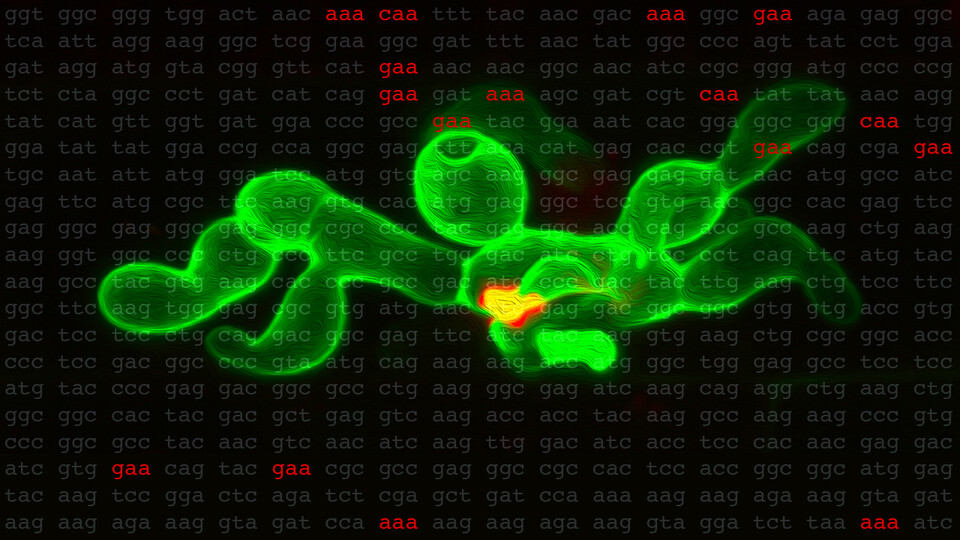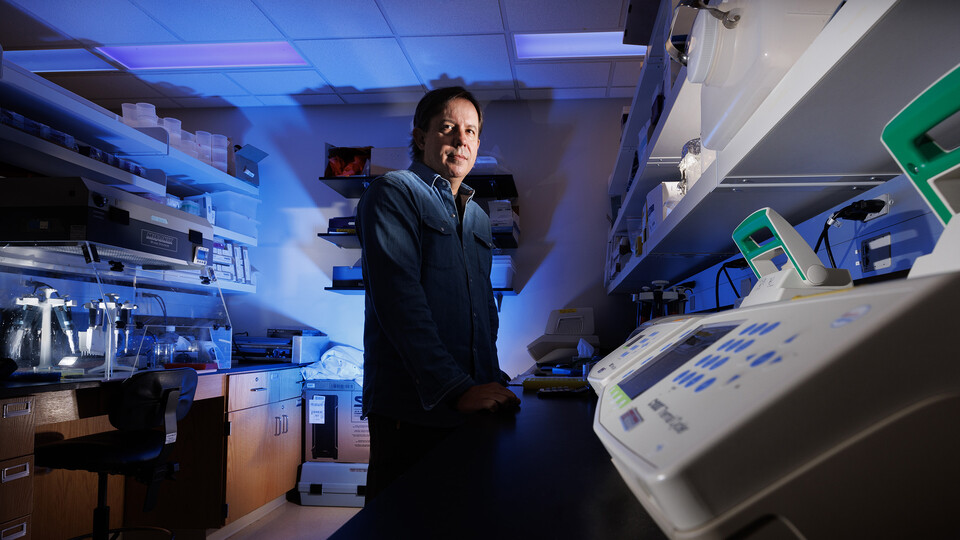Posted September 1, 2023 by Tiffany Lee
In case you missed these stories highlighting research and creative activity at the University of Nebraska-Lincoln, the Office of Research and Economic Development’s communications team has compiled a roundup of some recent top stories from research.unl.edu and other sources.

App could deliver ‘just in time’ messaging to help youth experiencing homelessness
Who: Kimberly Tyler, George Holmes University Professor of Sociology
What: With a $3.4 million grant from the National Institutes of Health, Tyler is developing a data-driven, app-based just-in-time intervention that provides individualized support to youth experiencing homelessness at critical junctures – moments when alcohol and drug use may be a tempting coping mechanism. The overall goal is to mitigate substance misuse, which is two to three times more prevalent among youth experiencing homelessness than among their housed peers. The app would be the first to proactively provide individualized content to these youth when they need it the most.
“It will be a step beyond what we currently have in trying to intervene in these high-risk situations,” Tyler said.
Writer: Tiffany Lee, Office of Research and Economic Development

Outreach program built statewide network of tech teachers
Who: Leen-Kiat Soh, Charles Bessey Professor of Computing; Gwen Nugent, research professor, Nebraska Center for Research on Children, Youth, Families and Schools; Wendy Smith, professor of mathematics; Guy Trainin, teaching, learning and teacher education; Kent Steen, Lincoln Public Schools
What: For the past five years, Soh has led the National Science Foundation-funded AIR@NE project, aimed at providing professional development and networking opportunities to computer science teachers in Nebraska. The initiative, now in its final year, has enabled 110 Nebraska K-8 teachers to take graduate-level courses in computer science and pedagogy; join a statewide network of colleagues; and spend $1,500 on equipment, among other benefits. Nebraska teachers, particularly those from smaller districts, said the program has been valuable.
“Just knowing that there are other people who are doing it individually in their schools and being able to connect with them – and with Lincoln Public Schools, which has been doing this for so many years – has been huge,” said Terry Julian, technology facilitator for Hastings Public Schools.
Writer: Tiffany Lee, Office of Research and Economic Development

Variyam co-develops innovative new data analysis algorithm
Who: Vinodchandran Variyam, professor of computing; Kuldeep Meel, National University of Singapore; Sourav Chakraborty, Indian Statistical Institute Kolkata
What: Variyam’s team developed a new algorithm to address a fundamental problem in large data analysis: the Distinct Elements Problem, which is the algorithmic task of approximating the number of unique data elements when it may be impractical to store or process an entire dataset. Developing such an algorithm has posed a significant challenge to computer scientists for years. Variyam’s algorithm is based on a sampling strategy that reduces memory requirements, making it highly scalable. It has generated praise from experts in the field and computer science educators.
“Many researchers have communicated to us that they will teach the algorithm in their course. Some already have,” Variyam said. “We believe that this will be a mainstream algorithm that is taught in the first computer science course on algorithms in general and probabilistic algorithm in particular.”
Writer: Victoria Grdina, School of Computing

Rural Prosperity Nebraska, Oklahoma State team up to study rural resilience
Who: Rural Prosperity Nebraska
What: Although rural communities may be disproportionately impacted by the changing climate, the majority of climate resilience research focuses on urban areas. The university’s Rural Prosperity Nebraska initiative is teaming up with Oklahoma State University and other institutions to change that. With National Science Foundation funding, the collaboration is launching a project called Rural Confluence to address climate issues directly affecting rural communities. The goal is to unite institutions from within the Mississippi River basin to advance the science of rural resilience and reduce climate-related vulnerabilities in rural communities.
“We are hoping to learn how new developments in our understanding of climate extremes and resiliency can help Nebraska communities better prepare, and thus lessen, the impact of extreme climate events,” said Mary Emery, director of Rural Prosperity Nebraska.
Writer: Russell Shaffer, Rural Prosperity Nebraska

Study IDs secret of stealthy invader essential to ruinous rice disease
Who: Richard Wilson, professor of plant pathology
What: Wilson leads a Nebraska team that recently published novel findings on how the virulent fungal species Magnaporthe oryzae overtakes rice cells, destroying enough yearly yields to feed tens of millions of people. Wilson’s team characterized the unconventional secretion route through which the fungus silences the immune responses of rice cells, demonstrating that the process is governed by modification of transfer RNA and codons, which are units of genomic information. These findings could help researchers understand human diseases that operate through similar immune-silencing pathways.
“So there are many ways,” Wilson said, “in which this work could enlighten a whole host of things.”
Writer: Scott Schrage, University Communication and Marketing

Research boosts honey bee protection against deadly viruses
Who: Troy Anderson, professor of entomology
What: Anderson is part of a Louisiana State University-led team that published findings that could provide a breakthrough in combating the Varroa mite, a parasite whose spread of viruses triggers catastrophic loss of honey bee colonies. The team identified a specific drug treatment that stimulates honey bees’ immune systems and boosts protection against mite-facilitated viral assault. In trials, infected honey bees that received the treatment had similar survival rates to uninfected bees. Protecting honey bees is critical for environmental sustainability and stability of the U.S. agriculture sector.
“We’ve provided a critical proof of concept that you can find a therapeutic target to inhibit virus-mediated mortality in bees at the field level,” Anderson said. “That is not only groundbreaking. It’s a huge step forward in being able to improve bee colony health with specific chemistries.”
Writer: Geitner Simmons, Institute of Agriculture and Natural Resources

Home and abroad: Roadside safety engineer saves lives
Who: Cody Stolle, research assistant professor for mechanical and materials engineering
What: Stolle’s research focuses on keeping people safe during unintentional crashes and protecting military facilities by adapting technology from roadside safety barriers to develop anti-crash barriers. His defense work is funded in part through an $800,000 grant from the U.S. Transportation Command through the National Strategic Research Institute at the University of Nebraska. This project focuses on protecting military installations from someone using a vehicle to forcibly enter or damage the facility, a departure from Stolle’s work on run-off-road barriers.
“But with defense work, you have to rethink it,” he said. “Now you’re not just looking to identify possibilities, but vulnerabilities. How can someone exploit the weaknesses of these systems?”
Writer: Katelyn Ideus, National Strategic Research Institute





